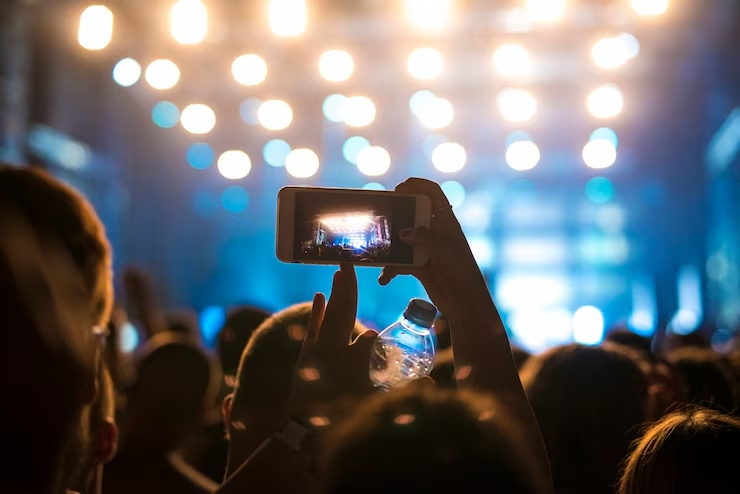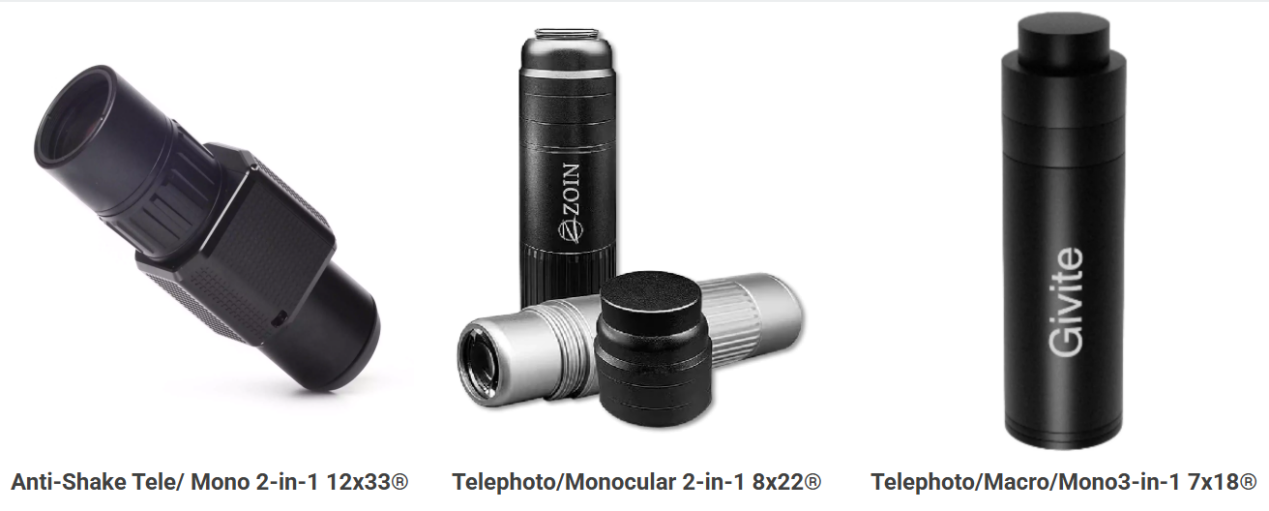
Request


Concert photography requires accuracy and artistry. The right lens is crucial for seizing lively moments. From faint lighting to energetic performances, picking the perfect lens can enhance your pictures. This guide examines vital factors in selecting lenses for concert photography. It highlights lens varieties and addresses external impacts. It also showcases why HEMUSUN is a dependable supplier for your lens requirements.
Choosing the ideal lens for concert photography demands thoughtful evaluation of several elements. These elements directly affect picture quality and usability in the demanding setting of live shows. Concerts feature unique challenges, like shifting lights and limited movement. Thus, it’s critical to focus on features that match your shooting approach and the venue’s limitations.
Aperture matters greatly when photographing live performances. Concert lighting is often dim and constantly changing. Lenses with wide-open aperture settings prove extremely useful in these conditions. Their large openings capture more available light. This results in better-exposed photos in dark venues. These bright lenses offer multiple advantages. First, they reduce dependence on boosting ISO sensitivity. Lower ISO means less digital noise in images. Second, they create attractive blurred backgrounds. This artistic effect makes performers stand out clearly from distracting stage elements.This produces a beautiful background blur. It isolates performers from cluttered stage settings. Selecting a lens with a fast aperture is essential. It helps achieve professional-quality results in the atmospheric glow of concerts.
Focal length shapes the lens’s angle of view. It affects the ability to photograph subjects at different distances. This makes it a vital factor based on the concert venue and your position. In smaller venues, a 35mm to 50mm focal length is excellent. It captures close-up moments, like a guitarist’s intense focus or a singer’s crowd interaction. These lengths offer a natural view, similar to human sight. In larger arenas, you may be farther from the stage. For flexibility across venues, a lens with a moderate range, adapts to various stage layouts. It avoids frequent lens swaps. Choosing the right focal length ensures you frame the action well, no matter the venue size.
Lens compatibility with your camera is a basic concern. It prevents performance problems or wasted purchases. Adapters can slow autofocus or reduce image quality. Some lenses are designed for full-frame sensors. Others suit crop-sensor cameras. This impacts the effective focal length. Before buying, confirm the lens matches your camera’s mount and sensor type. For smartphone users, products like the HEMUSUN Cell Phone Telephoto Monocular 2-in-1 8x22 work with most mobile devices. They offer an easy option for concert photography without a DSLR.
The lens type you pick greatly shapes your ability to capture a concert’s spirit and emotion. Each type—prime, zoom, or specialty—has distinct benefits and trade-offs. They suit different shooting styles and creative aims. Knowing their strengths helps you choose the best tool for the task.
Prime lenses have fixed focal lengths. They are popular among concert photographers for their outstanding image quality and low-light performance. Their simple optical design reduces distortions. Wide apertures perform well in dim concert venues. They freeze fast-moving performers without excessive graininess. Prime lenses also create striking bokeh. This isolates subjects against vivid stage lights for dramatic portraits. However, their fixed focal length limits adaptability. You must move physically to adjust framing or swap lenses for varied shots. This can be tough in crowded venues with limited access.
Zoom lenses, their adjustable focal lengths let you capture wide stage views, mid-range group shots, and tight close-ups. You don’t need to change lenses. This is invaluable when time and space are tight. For example, a 70-200mm lens can focus on a distant performer. It can then widen to include the whole band. It adapts to the show’s rhythm. Zoom lenses often have smaller maximum apertures than primes. Yet, modern designs offer strong low-light performance and sharpness. Their main drawbacks are added weight and cost. These may tire photographers during long shoots. Zoom lenses are ideal for large venues or unpredictable shows where adaptability is key.
Specialty lenses appeal to photographers seeking bold creative effects. For smartphone users, the HEMUSUN Cell Phone Telephoto Macro Monocular 3-in-1 7x18 blends telephoto and macro features. It offers creative versatility for concert photography. Specialty lenses need careful use to avoid overdone results. But they can add a unique touch to your portfolio when used thoughtfully.
Beyond lens choice, external elements heavily affect the quality of your concert photos. These environmental and situational factors require adaptability and preparation. They help you achieve remarkable results.
Concert lighting is notoriously tricky. Dim ambient light mixes with bright, colorful stage lights. These lights shift quickly. Low light tests lenses and cameras. It often requires wide apertures and high ISO settings to maintain exposure. Sudden bursts of bright spotlights or strobes can cause overexposure. This happens if settings aren’t adjusted fast. To handle this, use a lens with a fast aperture. Shoot in RAW format. This gives more flexibility in post-processing.
Strong composition turns a decent concert photo into an exceptional one. But achieving it in a lively setting is tough. Your venue position—whether in the pit, balcony, or crowd—shapes perspective. Closer access allows intimate portraits. Distant spots need telephoto lenses for tight framing. Stage elements like microphones, instruments, or lighting rigs can clutter the frame. A lens with a shallow depth of field helps isolate performers. A telephoto lens, like the HEMUSUN Anti-Shake Cell Phone Lens Monocular Telescope 2-in-1 12x33, compresses backgrounds. It reduces distractions and highlights the artist.
Many concert venues enforce strict rules on photography gear. They often ban professional cameras, interchangeable lenses, or tripods to avoid disruption. These rules push photographers to use compact cameras, smartphones, or approved equipment. This impacts lens choices. For instance, a venue banning DSLRs may lead you to a high-performance smartphone lens. HEMUSUN offers such lenses. They are lightweight and venue-friendly. Always check the venue’s policy beforehand.
Picking the wrong lens can limit your ability to capture a concert’s essence. This leads to missed moments or poor images. Avoiding common errors ensures your gear meets the demands of live music photography.
Concert settings are tough. Crowded spaces, sudden movements, and occasional spills pose risks to equipment. A lens with weak build quality may not handle bumps or environmental stress. This can cause malfunctions or damage. Choose lenses with solid construction. Look for metal barrels or weather-sealed designs. These ensure durability. High-quality lenses also maintain optical performance under pressure. They deliver reliable results. Investing in a sturdy lens protects your gear. It ensures dependability during high-energy shoots.
Concert photography often involves long hours of holding equipment. A heavy lens can cause fatigue. This reduces your ability to shoot effectively. Zoom lenses are versatile but bulky. They may strain your arms during long performances. Prime lenses or compact smartphone attachments, like those from HEMUSUN, are lighter options. They don’t sacrifice quality. Consider your physical stamina and shooting duration when choosing a lens. Balance performance with portability for comfort and mobility.
Selecting a lens with an unsuitable focal length can restrict your creative vision. It may make desired shots impossible. For example, a wide-angle lens in a large arena may produce distant, cluttered images. A telephoto lens in a small club may limit group shots. Match the focal length to your shooting style and venue size. Use wide or standard lenses for intimate venues. Choose telephoto for distant stages. Test your lens in similar settings beforehand. This confirms it suits your approach.
For photographers seeking trustworthy lenses, HEMUSUN excels as a dependable provider. They offer innovative solutions tailored to concert photography needs.
You can find these high-quality mobile lenses at HEMUSUN. They are designed to be both flexible and simple to use. The collection includes three main varieties: lenses for far-away subjects, lenses for extreme close-ups, and single-lens viewers. Each type helps improve pictures taken with your phone. These are especially useful at music events where regular cameras aren’t allowed. Despite their small size, they give results like professional equipment. Both casual users and serious photographers will appreciate them.
These lenses are made specifically for taking pictures at live shows. The long-range options let you clearly photograph artists on stage from far away. They work almost as well as much bigger camera lenses. Several features make them perfect for concerts. They reduce blur from movement so pictures stay sharp. Special glass treatments make colors look bright and true under colorful stage lights. They attach easily to most phones with a simple clip. Their small size means you can take them anywhere. Because of these smart designs, HEMUSUN lenses solve many problems photographers face at concerts.

Taking good concert photos needs both technical knowledge and creative skill. You should think carefully about several things. How wide the lens opens is very important. Being able to zoom is also useful. Make sure the lens works with your camera too. Knowing these things helps you capture the excitement of live music. When you buy from experts like HEMUSUN, you get lenses made just for concerts. These can make your phone camera much more powerful for shooting shows.
Lenses that open between f/1.4 and f/2.8 are ideal. They let in more light in dark venues. They also make the artist stand out against the background.
Regular starter lenses don’t work as well at shows. They don’t capture enough light. They focus more slowly. They can't separate the performer from the background clearly. Better choices are special fixed lenses or HEMUSUN’s phone attachments for long-distance shots.
During the show, use a hood to guard against hits. Keep a cleaning cloth ready for fingerprints. Try not to change lenses in busy or dirty areas. After the concert, clean gently with proper tools. Always store in a safe case to prevent damage.